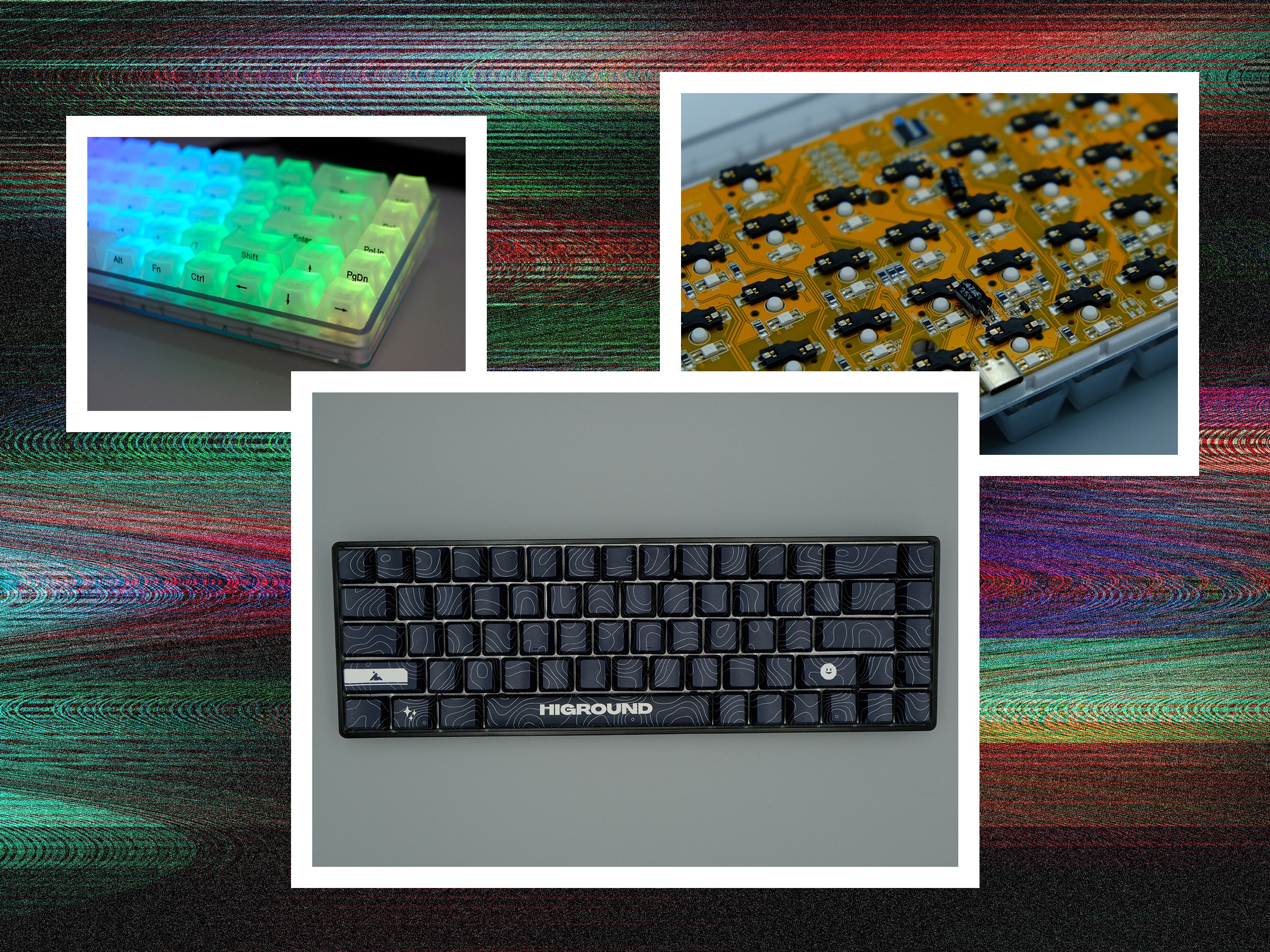My entire awareness of HiGround stems from content creators on social media promoting the company's keyboards—showing them off, touting how great they sound and feel to type on, and talking about the “premium unboxing experience.”
HiGround, owned by eSports and lifestyle brand 100Thieves, has largely relied on viral marketing campaigns to get its name out. But the claims you see in these promotional videos are hard to quantify—what may seem good to someone who has only typed on a gaming keyboard may be disappointing to someone used to custom keyboards.
The HiGround Opal Base 65 is a fairly traditional gaming keyboard. It serves its purpose, and I really can’t complain about that. It’s a bit of a brute-force solution though. HiGround has taken the simplest keyboard design and pushed it as far as possible without reworking its core principles. What the company got out of it is impressive, but putting more research and development into a refined system would have netted much better results. It feels like other heavily social-media-advertised products: It's acceptable on its own, but compared to other products in this price bracket it's clear the Base 65 is nowhere near as good a value proposition.
Interesting Switches
Overall, the Opal Base 65 feels good to type on. Not great, but good. The switches—HiGround’s custom White Flame switches—are simple, smooth, linear switches with a medium-weight spring. They’re basic and inoffensive, and they can easily be swapped out for another switch thanks to the keyboard’s Gateron hot-swap sockets.
These switches have box-style stems, which means they’re more resistant to dust and grime than most switches. This is nice to see on an entry-level keyboard, since it eliminates a potential point of failure, but I often find dustproof stems unnecessary unless you’re working in an environment with a lot of dirt and dust in the air (or if you regularly eat over your keyboard).
Opening up the switches, they have a longer-than-usual spring installed. While these initially appear to be a two-stage spring with two separate weights, they feel more like a single-weight long spring, having a consistent keypress through the entire travel distance and an incredibly quick upstroke. As a result, typing feels faster, and keys return to their default position quickly, but the total keypress distance is also slightly shortened compared to your typical mechanical switch. (A shorter travel distance can be good or bad, depending on preference. I often find it makes gaming more responsive but typing less enjoyable when compared to a full-length switch.)

